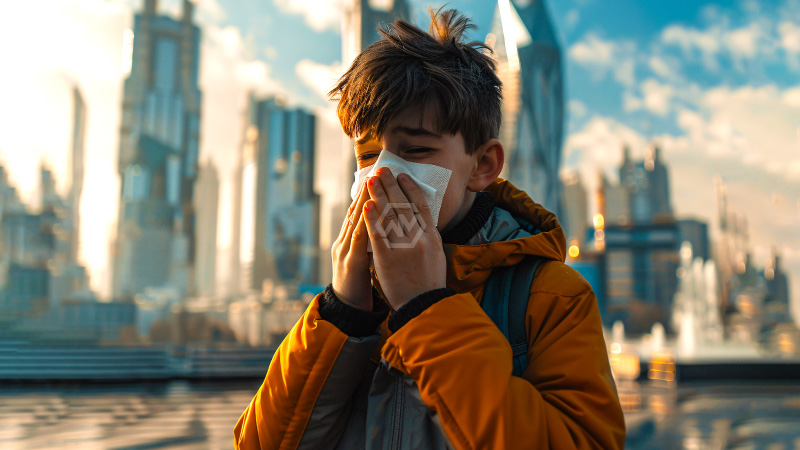- Climate change alters seasonal patterns, affecting flu virus activity.
- Warmer temperatures extend virus survival outside hosts.
- Human behavior and ecological changes due to climate change impact flu transmission.
Global warming has a significant impact on the patterns and intensity of flu seasons. Changes in temperature and precipitation alter the timing and duration of seasons, leading to shifts in when flu viruses become active.
Additionally, climate change influences human behavior and ecological systems. As temperatures rise, people spend more time indoors, where viruses can spread more easily.
How Global Warming Fuels the Surge in Flu Cases
Climate change significantly affects seasonal patterns, altering the timing and intensity of flu seasons. Higher temperatures and changes in precipitation disrupt the traditional flu season, potentially extending the period during which flu viruses are active. This means that people are exposed to flu viruses for longer periods, increasing the chances of contracting the illness.
Warmer temperatures contribute to the extended survival of influenza viruses outside of hosts. This prolonged survival period enhances the likelihood of virus transmission in various environments, making it easier for flu outbreaks to occur. Consequently, the environmental persistence of flu viruses is heightened, posing a greater risk to public health.
Human behavior also shifts in response to climate change. Increased indoor activities due to extreme weather conditions provide more opportunities for the flu virus to spread among individuals. Furthermore, climate-induced migration patterns can facilitate the spread of infectious diseases, including the flu, across different regions and populations.
Ecological changes driven by climate change impact animal habitats and behaviors, influencing the transmission of zoonotic diseases. Changes in ecosystems can lead to a higher prevalence of zoonotic influenza viruses, which can then spread to humans. Additionally, populations displaced by extreme weather events may experience increased stress and malnutrition, making them more susceptible to infections like the flu.
The interplay between global warming and rising flu cases highlights the complex relationship between climate change and public health. Addressing climate change and its impacts is crucial for mitigating the spread of infectious diseases and protecting vulnerable populations.
“Overall, while the direct link between global warming and flu cases is complex and multifaceted, these factors illustrate



